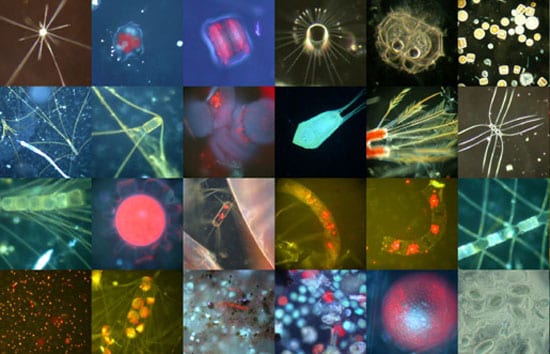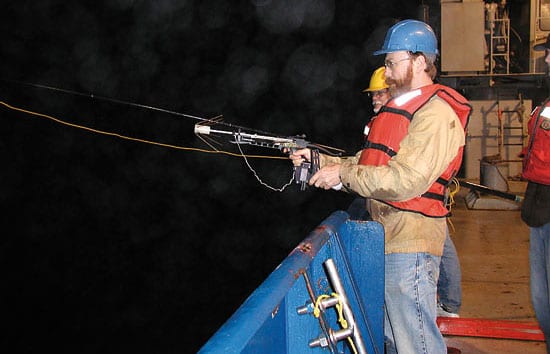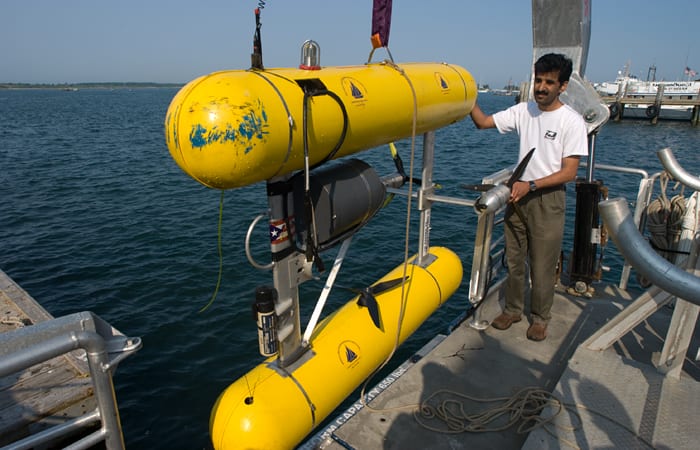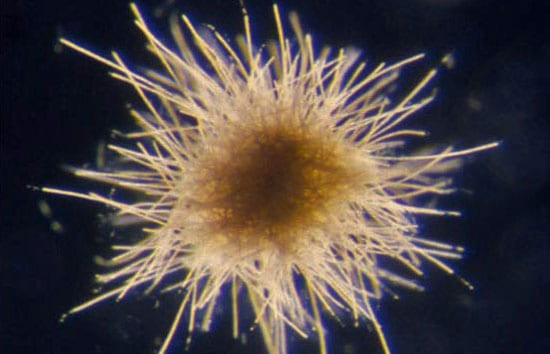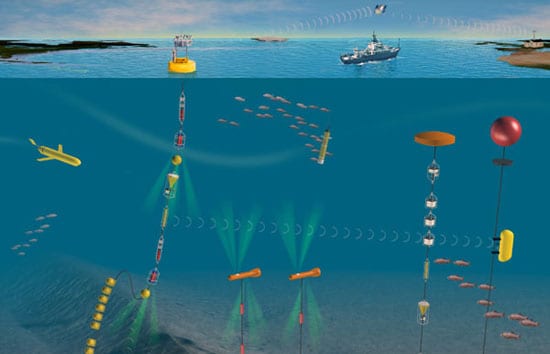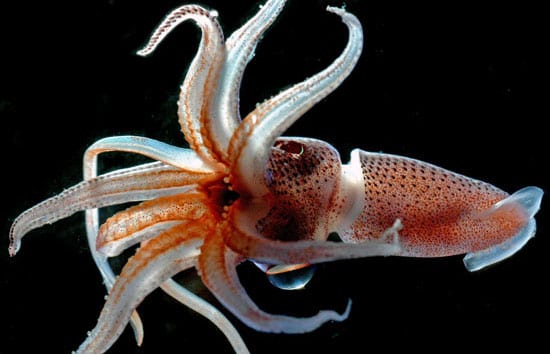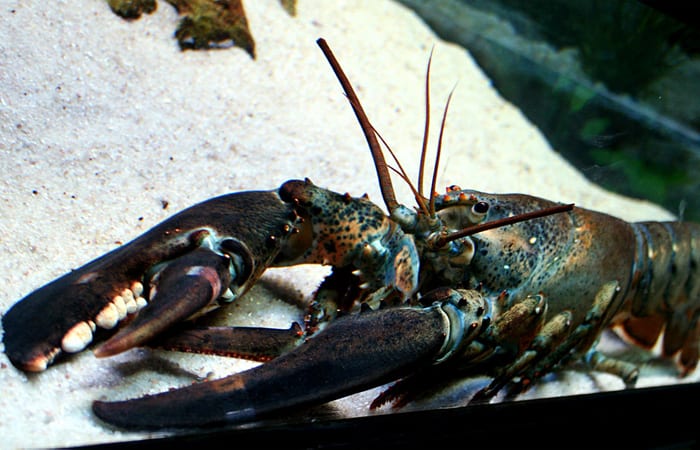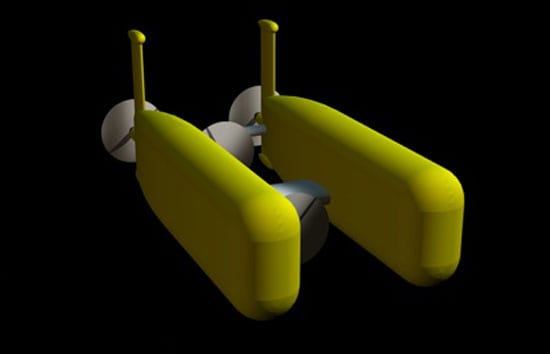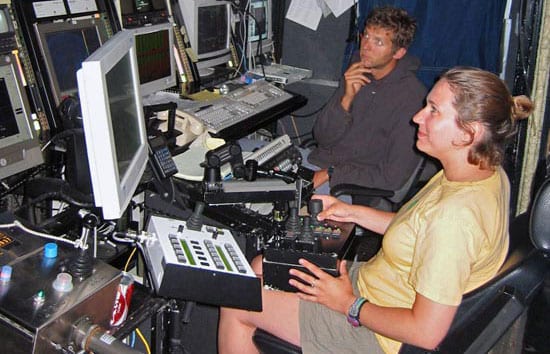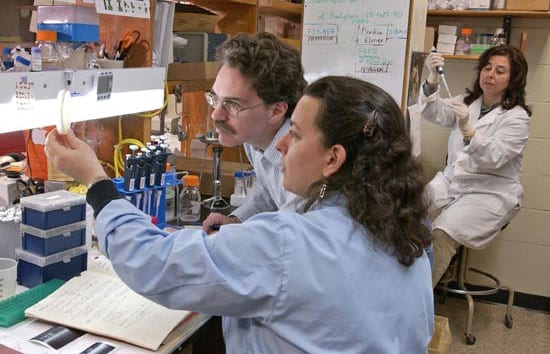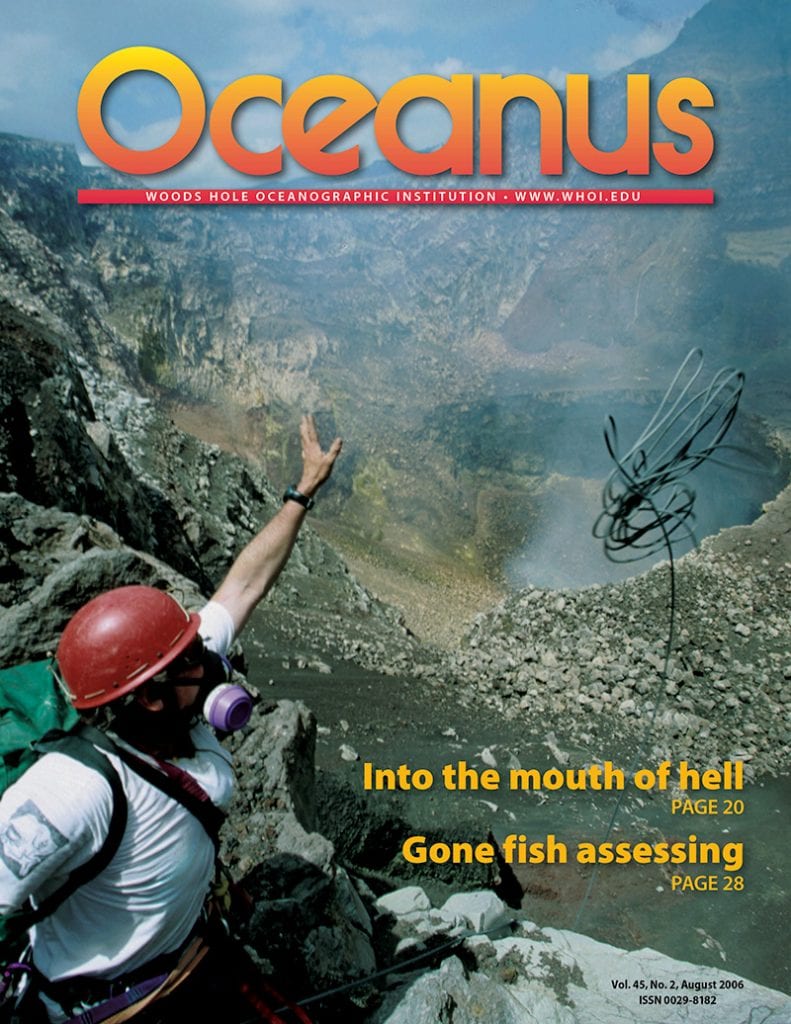
August 2006 ( Vol. 45 No. 2 )
and get Oceanus delivered to your door twice a year as well as supporting WHOI's mission to further ocean science.
Our Ocean. Our Planet. Our Future.
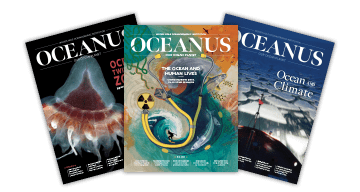
Legions of Legionella Bacteria
Salty ocean water can be a nuisance. It’s undrinkable and it corrodes nearly everything it touches. But salt water’s inhospitality has always had one benefit: The salt kills microbes, making…
A Journey to the Ocean's Twilight Zone
You are about to enter another dimension. You’re moving into a place of both shadow and substance, of things and ideas; a journey into a wondrous part of the ocean,…
Swimming in the Rain
Twilight zones, witch hunts, and crossbows usually don’t find their way into tales about new oceanographic instruments. This story isn’t typical, but it does start in the usual way, with…
Gone Fish Assessing
Scientists at WHOI are applying new technologies to help the National Marine Fisheries Services assess fish stocks and maintain critical habitats
Jason Versus the Volcano
Through the camera eyes of the undersea vehicle Jason, scientists were investigating a quietly bubbling pit on the side of a large volcano on the seafloor south of Japan in…
Ocean Microscope Reveals Surprising Abundance of Life
Towing an underwater video microscope across the Atlantic Ocean, two scientists found unexpected abundances of colonial cyanobacteria that fertilize the oceans with nitrogen. The bacteria may turn out to be…
Scientists Gear Up to Launch Ocean Observing Networks
Oceanography is on the verge of a revolution. Scientists and engineers have been dreaming up networks of permanent observing outposts that could probe from the sea surface to the seafloor from many different locations in the Atlantic, Pacific, and Arctic Oceans. And that dream may take a big step toward reality if Congress agrees to the National Science Foundation's six-year Ocean Observatories Initiative.
Voyage Takes a Census of Life in the Sea
Scientists collected more than 1,000 shrimplike creatures, swimming snails and worms, and gelatinous animals, including many species never seen before, on a landmark cruise to take inventory of the ocean’s…
A Modest Proposal to Sustain Lobsters and Lobstermen
A new study by a WHOI scientist and a former lobsterman suggests a provocative lobster management strategy that offers economic benefits to the lobster fishermen, while invigorating lobster stocks.
Transparent Animal May Play Overlooked Role in the Ocean
Salps don’t get much respect. They’ve been around for millions of years, but hardly anyone even knows they exist. Even many who have heard about these transparent, jelly-like creatures consider…
New Hybrid Deep-sea Vehicle Is Christened Nereus
Nereus—a mythical god with a fish tail and a man’s torso—was chosen Sunday (June 25) in a nationwide contest as the name of a first-of-its-kind, deep-sea vehicle under construction at…
WHOI President and Director Robert Gagosian Steps Down
Robert B. Gagosian announced June 5 that he plans to step down as president and director of Woods Hole Oceanographic Institution, a position he has held for 12 years. Effective…
New WHOI Class Helps Students Communicate with Public
There’s a lot of giggling outside room 304 at Mullen-Hall Elementary School in Falmouth. Mass., as 24 fourth-graders wait for their classroom to be transformed into the deep ocean. They…
A Laser Light in the Ocean Depths
Graduate student Anna Michel is adapting laser technology to the murky fluid environment and crushing pressures at depths of 11,000 feet. The goal is to develop an instrument that can directly measure the many elements spewing from hydrothermal vents just as they emerge from Earth?s crust.
The Chicken and the Tern
WHOI scientists find that the dramatic difference comes down to three amino acids on a single protein.
Into the 'Mouth of Hell'
Ken Sims peers over the rim of Masaya Volcano and looks 2,000 feet (600 meters) down into the smoking crater lined with rows of jagged rocks that jut up like…
Abandoned Walrus Calves Reported in the Arctic
Researchers on an oceanographic voyage in the Arctic Ocean report, for the first time, baby walruses unaccompanied by mothers in areas far from shore and over deep water, where they likely could not survive. The phenomenon was coincident with movement of warm water into Arctic basins and subsequent melting of the sea ice that walruses normally utilize as resting platforms.
Building a Computer Model to Forecast Red Tides
The algae Alexandrium fundyense are notorious for producing a toxin that accumulates in shellfish such as clams, mussels, and oysters, leading to paralytic shellfish poisoning in humans. The microscopic plants…
Lurking Benignly on the Seafloor, the ‘Yeti’ Crab is Discovered
Biologist Cindy Van Dover routinely finds new, unusual creatures when she dives to unexplored areas of the ocean in the deep-sea submersible Alvin. So she was not particularly fazed when…


